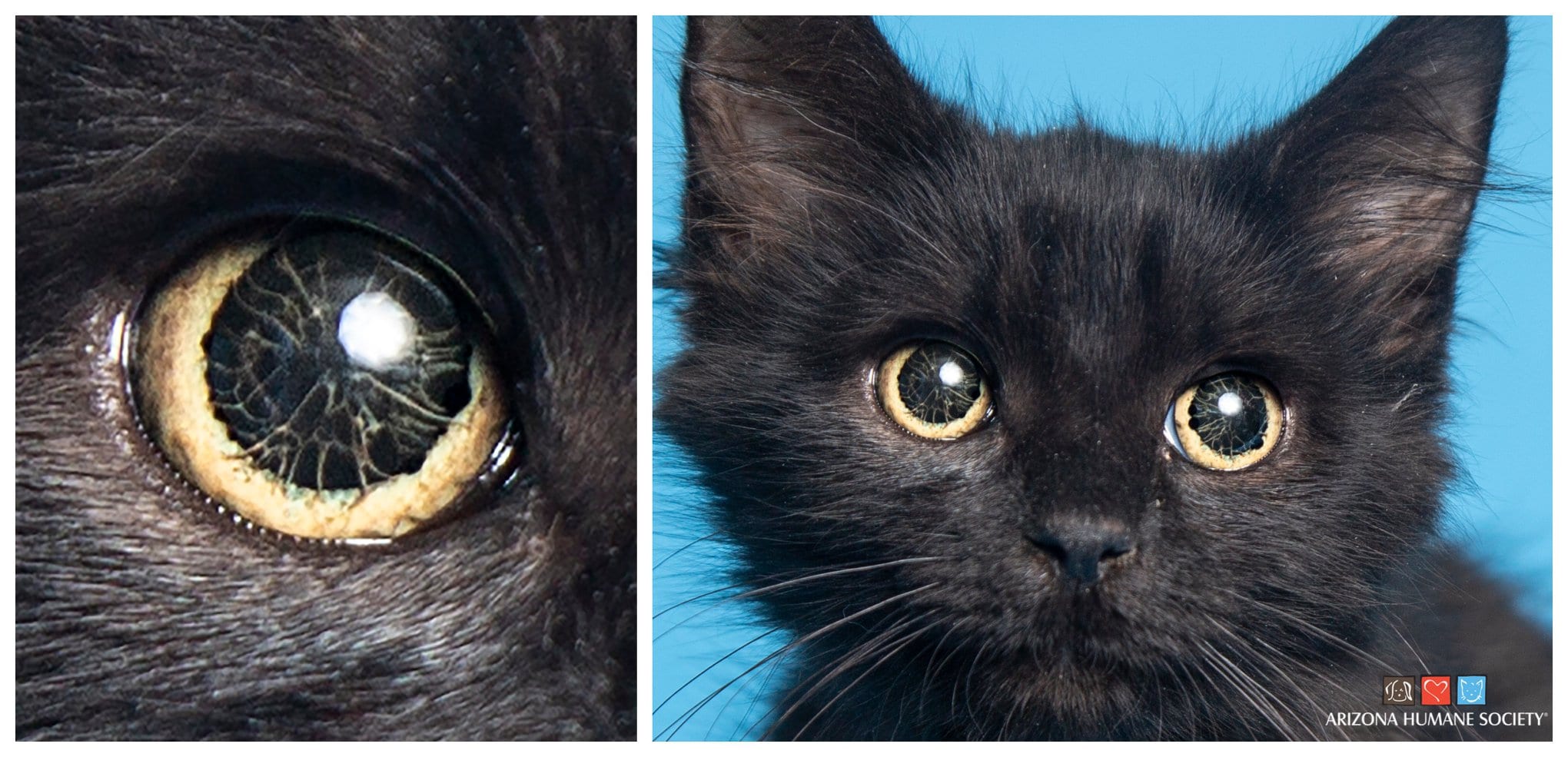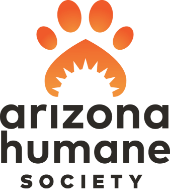News Highlights:
- Sonnet arrived at AHS in late June as a stray 5-month-old kitten who was then treated in AHS’ cat isolation area for an upper respiratory infection. While being treated, the AHS team noticed something unusual about her eyes where they later came to the conclusion that Sonnet is living with Persistent Pupillary Membrane (PPM).
- PPM is a congenital ocular development defect that is typically not harmful, requires no treatment and typically resolves by six weeks of age. However, at Sonnet's age, her eyes will likely remain that way throughout her life.
- After her recovery from the upper respiratory infection, Sonnet was placed in an AHS Foster Hero home and was later adopted.
A Special Kitty "With a Galaxy" in Her Eyes
Kathryn Primm, DVM, CVPM, PetVet Magazine | October 6, 2020

One day recently, a tiny black ball of fluff arrived at the Arizona Humane Society. She is one of the over 80,000 lives that have been saved there in the last five years. This precious kitten was not feeling well, so she was examined by the Arizona Humane Society medical team and ushered to their cat isolation area to manage an upper respiratory infection. Upper respiratory infections are common in kittens, but there was something uncommon about this kitten whom the team named Sonnet.
She had very striking eyes. In fact, her eyes looked almost like broken window panes or like a spider had spun a web in each of her eyes. The shelter photographer, Brian Sterrett, says that Sonnet looked as though she had a “galaxy in her eyes.” She did not seem particularly uncomfortable, but the team was not sure she had full vision, especially in her left eye.
It turned out that Sonnet was affected by an unusual congenital disorder called Persistent Pupillary Membranes (PPM). According to William W. Miller, DVM, MS, DACVO, PPM is a congenital anomaly that has no known genetic predisposition. During development, the pupillary membranes serve as a source of nutrition to the emerging ocular structures. Once the eyes are fully developed, the role of the membranes is over and they usually regress. In some cases, like Sonnet’s, they fail to dissolve like they should and leave behind the remnants of the membrane network.
Read full story.
https://issuu.com/groomertogroomer/docs/petvet_october_november_2020/30
 Back to News
Back to News
 One day recently, a tiny black ball of fluff arrived at the Arizona Humane Society. She is one of the over 80,000 lives that have been saved there in the last five years. This precious kitten was not feeling well, so she was examined by the Arizona Humane Society medical team and ushered to their cat isolation area to manage an upper respiratory infection. Upper respiratory infections are common in kittens, but there was something uncommon about this kitten whom the team named Sonnet.
She had very striking eyes. In fact, her eyes looked almost like broken window panes or like a spider had spun a web in each of her eyes. The shelter photographer, Brian Sterrett, says that Sonnet looked as though she had a “galaxy in her eyes.” She did not seem particularly uncomfortable, but the team was not sure she had full vision, especially in her left eye.
It turned out that Sonnet was affected by an unusual congenital disorder called Persistent Pupillary Membranes (PPM). According to William W. Miller, DVM, MS, DACVO, PPM is a congenital anomaly that has no known genetic predisposition. During development, the pupillary membranes serve as a source of nutrition to the emerging ocular structures. Once the eyes are fully developed, the role of the membranes is over and they usually regress. In some cases, like Sonnet’s, they fail to dissolve like they should and leave behind the remnants of the membrane network.
Read full story.
https://issuu.com/groomertogroomer/docs/petvet_october_november_2020/30
One day recently, a tiny black ball of fluff arrived at the Arizona Humane Society. She is one of the over 80,000 lives that have been saved there in the last five years. This precious kitten was not feeling well, so she was examined by the Arizona Humane Society medical team and ushered to their cat isolation area to manage an upper respiratory infection. Upper respiratory infections are common in kittens, but there was something uncommon about this kitten whom the team named Sonnet.
She had very striking eyes. In fact, her eyes looked almost like broken window panes or like a spider had spun a web in each of her eyes. The shelter photographer, Brian Sterrett, says that Sonnet looked as though she had a “galaxy in her eyes.” She did not seem particularly uncomfortable, but the team was not sure she had full vision, especially in her left eye.
It turned out that Sonnet was affected by an unusual congenital disorder called Persistent Pupillary Membranes (PPM). According to William W. Miller, DVM, MS, DACVO, PPM is a congenital anomaly that has no known genetic predisposition. During development, the pupillary membranes serve as a source of nutrition to the emerging ocular structures. Once the eyes are fully developed, the role of the membranes is over and they usually regress. In some cases, like Sonnet’s, they fail to dissolve like they should and leave behind the remnants of the membrane network.
Read full story.
https://issuu.com/groomertogroomer/docs/petvet_october_november_2020/30


 FOX 10 & 12 News: Kitten Rescued from Storm Drain
FOX 10 & 12 News: Kitten Rescued from Storm Drain